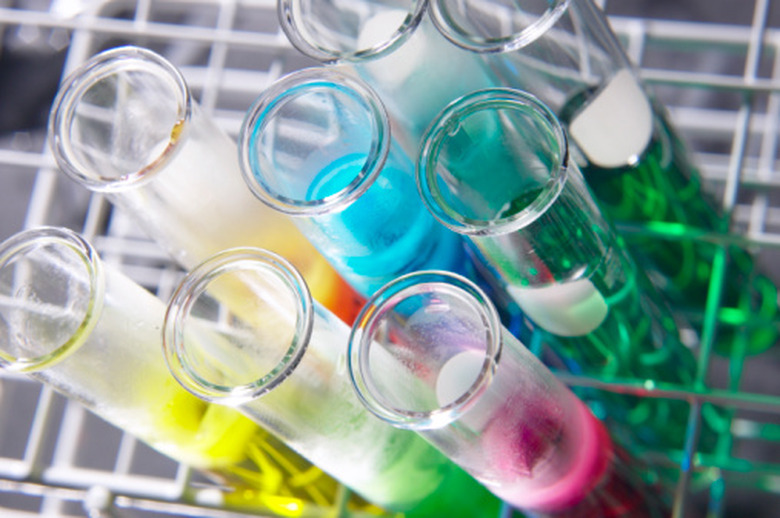How To Test The Completeness Of Precipitation Of An Ion
Gravimetric analysis provides qualitative and quantitative information to chemists about an unknown sample. A chemist can separate ions from a solution based on their solubility and reactivity with respect to particular chemicals. When working with an unknown, performing precipitation and separation experiments can confirm or rule out the presence of ions. During precipitation experiments, it is important to remove completely one or more ions from solution by adding a precipitating reagent. To verify that all of the ion or ions precipitating have been removed, the chemist performs a completeness of precipitation test. The chemist removes the liquid above the precipitate and adds a small amount of the precipitating agent to the liquid to determine if any more precipitate will form.
Step 1
Place 5 ml of a solution that contains the ion or ions of interest into a test tube. As an example, assume that the solution contains Pb+2 ions.
Step 2
Add 1 ml of the precipitating agent to the test tube. In this example, the precipitating agent is HCl. Take care in adding HCl to the known solution because an excess of HCl may redissolve the PbCl2 that precipitates out of solution.
Step 3
Place the test tube in a centrifuge and allow the precipitate to settle to the bottom of the test tube. Balance the centrifuge by placing a test tube with an equal amount of water in the position exactly opposite the test tube with the test solution in it.
Step 4
Remove the test tube with the precipitate in it and using a pipet remove the liquid above the precipitate from the test tube and place it in a new test tube. Take care not to remove any precipitate with the pipet because that will transfer some of the PbCl2 to the new test tube.
Step 5
Add a few drops of the HCl precipitating agent to the test tube with the liquid in it. If any precipitate forms in the test tube then the precipitation of Pb+2 is not complete. If no precipitate forms, then precipitation is complete.
Things Needed
- Solution of known ions
- Test tubes
- Precipitating agent
- Centrifuge
- Pipet with bulb
Cite This Article
MLA
Lancaster, Sean. "How To Test The Completeness Of Precipitation Of An Ion" sciencing.com, https://www.sciencing.com/test-completeness-precipitation-ion-8419920/. 24 April 2017.
APA
Lancaster, Sean. (2017, April 24). How To Test The Completeness Of Precipitation Of An Ion. sciencing.com. Retrieved from https://www.sciencing.com/test-completeness-precipitation-ion-8419920/
Chicago
Lancaster, Sean. How To Test The Completeness Of Precipitation Of An Ion last modified August 30, 2022. https://www.sciencing.com/test-completeness-precipitation-ion-8419920/
